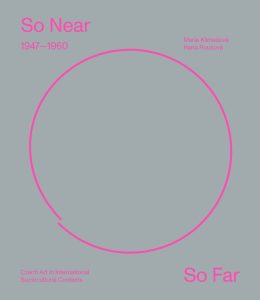
Czech visual art between 1947 and 1960 has never before been considered in a broader European context that avoids the stereotype of the “Iron Curtain”. At the same time, when looking at this period, certain clichés and stereotypes are repeatedly perpetuated, hindering the understanding of the true nature and position of Czech art during this period within the post-war world. The goal of the book is to provide a fresh evaluation of Czech art during this period, steering clear of the stereotypes associated with Central and Eastern Europe, and instead, viewing this art as integral to the multifaceted post-war evolution of Europe. This marks the first occasion in the nation’s history where it comprehensively examines Czech culture during the height of dogmatism, encompassing both its official and unofficial aspects, as well as the initial years of moderate political easing. Art historians Marie Klimešová and Hana Rousová have devoted most of their professional lives to this period. To put it plainly, nobody else has delved into this complex period with such thoroughness and essential context. The text, accompanied by four hundred and fifty reproductions, undoubtedly leads to an awareness of the cohesive power of the fundamental values of European culture. These factors elevate the book to one of the most important and necessary books published in the Czech Republic in recent decades.
Co-edition with Arbor Vitae Societas.
496 p., hardback
